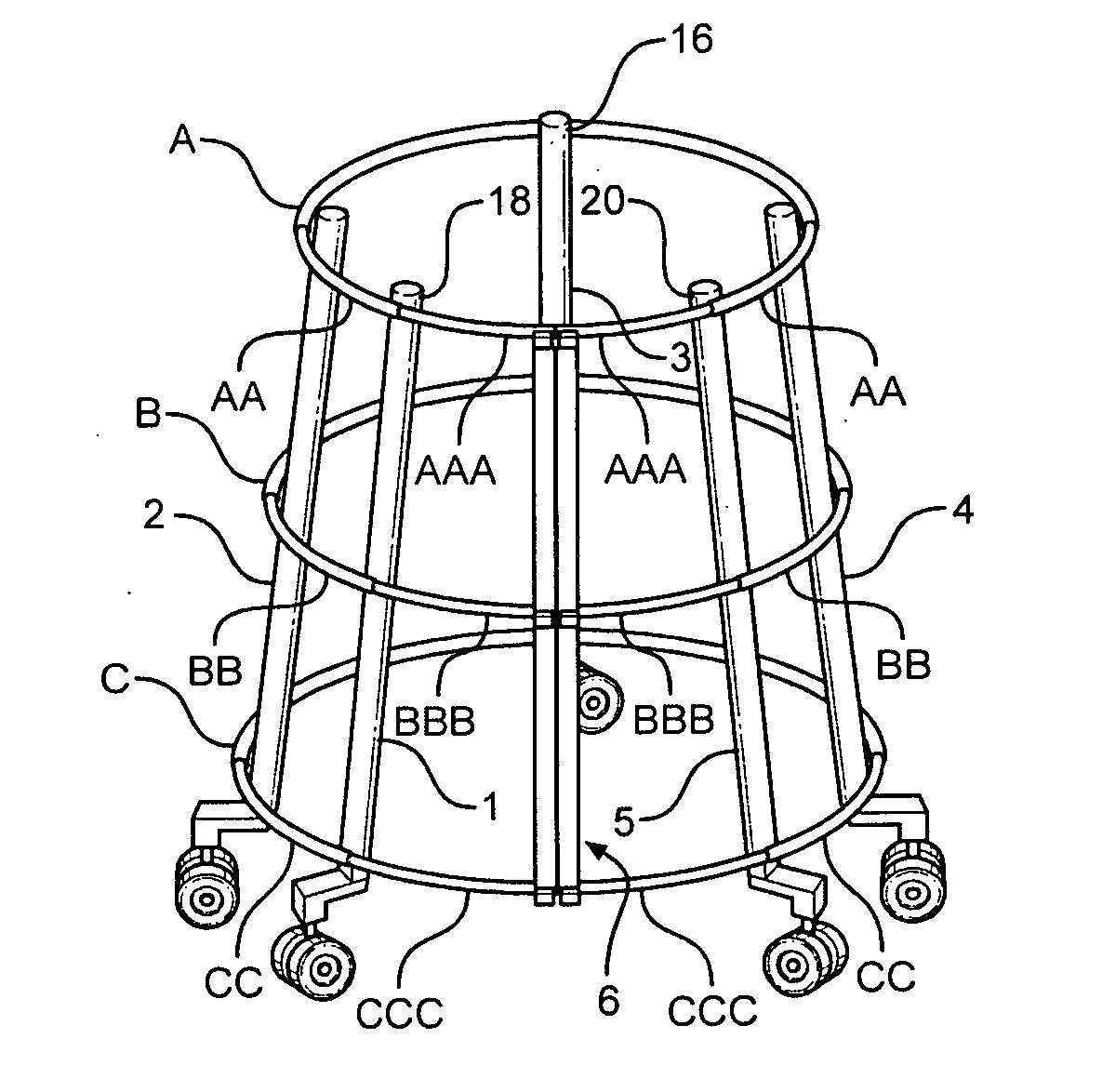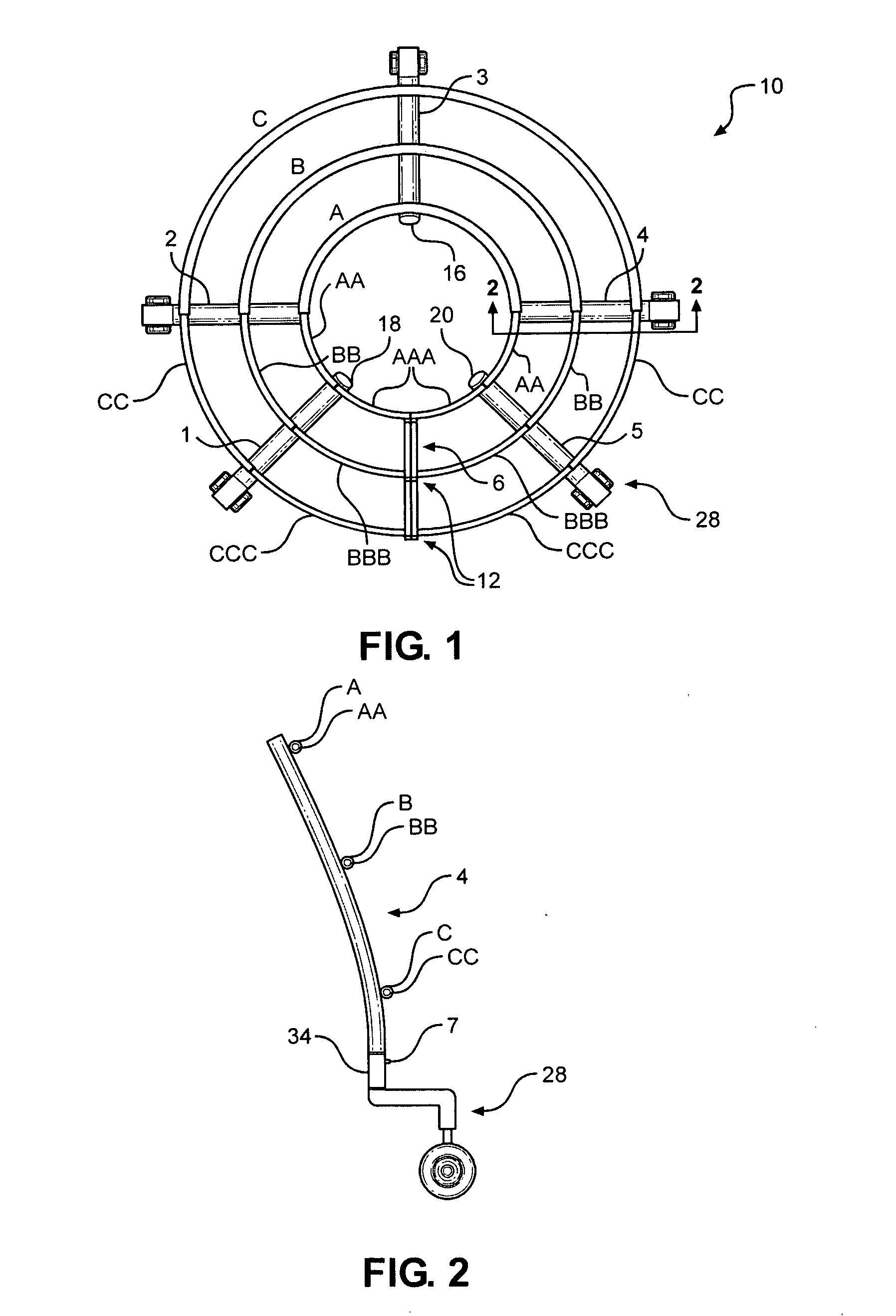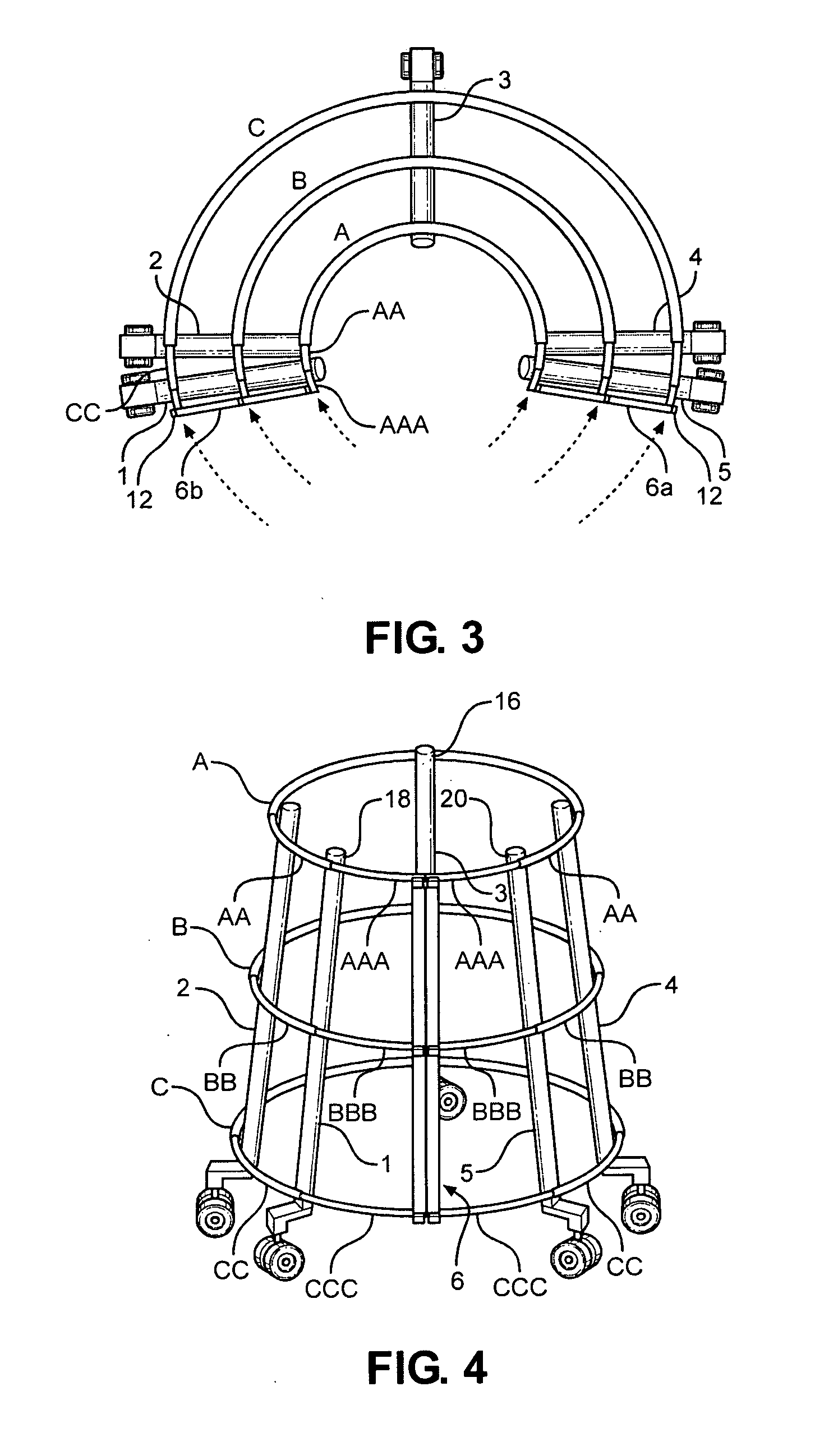Therapeutic mobility assistive device
a technology of assistive devices and therapeutic devices, which is applied in the direction of walking aids, physical therapy, transportation and packaging, etc., can solve the problems of inconvenient use, inconvenient use, and inability to meet the needs of patients, and achieve the effect of reducing the side clearance of the wheel assemblies
- Summary
- Abstract
- Description
- Claims
- Application Information
AI Technical Summary
Benefits of technology
Problems solved by technology
Method used
Image
Examples
Embodiment Construction
[0035]FIG. 1 is a top view of the present invention, in a closed position, in accordance with a preferred embodiment.
[0036]FIG. 2 is an exemplary side view of column 4 along line 2-2 in accordance with the preferred embodiment depicted in FIG. 1.
[0037]FIG. 3 is an exemplary top view of the present invention, in a second open position, in accordance with the preferred embodiment depicted in FIG. 1.
[0038]FIG. 4 is a perspective view of the present invention in accordance with the preferred embodiment depicted in FIG. 1.
[0039]FIG. 5 is a top view of an exemplary harness and security straps of the present invention in accordance with a preferred embodiment.
[0040]FIG. 6 is a more detailed front view of an exemplary wheel assembly on anchor column 4 in accordance with the preferred embodiment depicted in FIG. 2.
[0041]FIG. 7 is a side view of the exemplary wheel assembly in accordance with the preferred embodiment depicted in FIG. 6.
DETAILED DESCRIPTION OF PREFERRED EMBODIMENTS
[0042]Referr...
PUM
 Login to View More
Login to View More Abstract
Description
Claims
Application Information
 Login to View More
Login to View More - R&D
- Intellectual Property
- Life Sciences
- Materials
- Tech Scout
- Unparalleled Data Quality
- Higher Quality Content
- 60% Fewer Hallucinations
Browse by: Latest US Patents, China's latest patents, Technical Efficacy Thesaurus, Application Domain, Technology Topic, Popular Technical Reports.
© 2025 PatSnap. All rights reserved.Legal|Privacy policy|Modern Slavery Act Transparency Statement|Sitemap|About US| Contact US: help@patsnap.com



